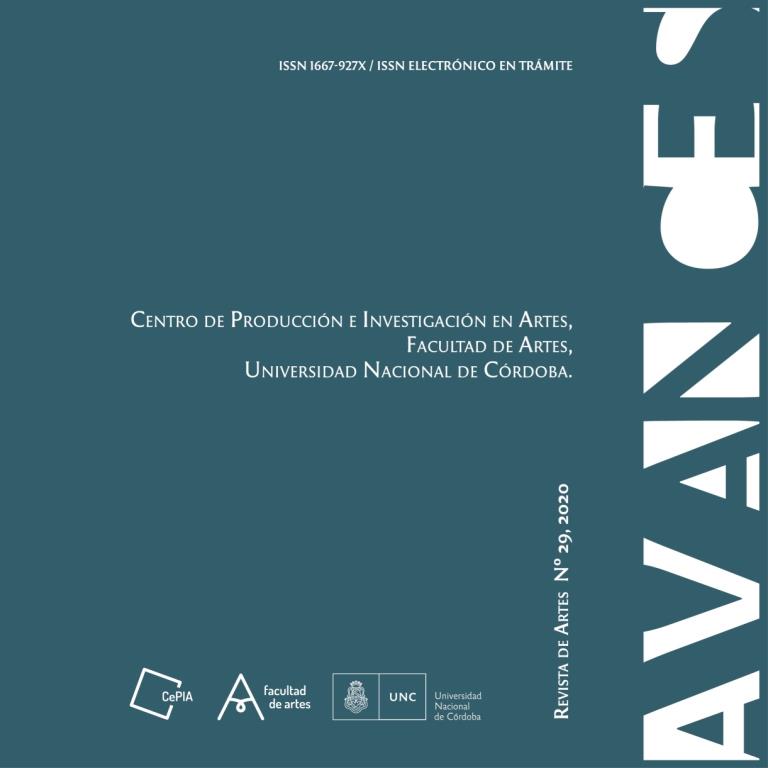LOÏE FULLER: THE VICISSITUDES OF SERPENTINE DANCE IN “LA DOCTA”
Keywords:
Loïe Fuller, Serpentine Dance in Córdoba, Loïe Fuller in “la Docta”Abstract
Loïe Fuller presents her famous Serpentine Dance in Córdoba, also known as “la Docta”, Argentina on August 11th, 1904. The dancer/actress creates a new type of art, one that abides by the rules of symbolism and Art Nouveau. Loïe develops a system of representations in which space, light and movement acquire new meanings. The fabric she manipulates by the use of wands defy imagination when creating a dematerialized, expanded and ephemeral body.
Patriarchal Society from Cordoba in 1900 saves women the participation to lay catholic associations. In Theatres, just a privileged group of people has access to opera shows, concerts and zarzuelas from Italian, French and Spanish companies. Fuller performs in the Argentine Theatre from Cordoba. La Voz del Interior newspaper broadcasts that “Smaun Sing Hpod, the Indian dwarf” and “the one and only singing doll who also waves and runs” are part of the show.
Loïe Fuller’s appearance shocks traditional society from Córdoba, but at the same time it brings winds of change acting as a prelude to modern times. However, more than five decades will have to pass before scenic dance gains its own place in Córdoba.
Downloads
References
AAVV (2008). Historia general de la Danza en Argentina. Buenos Aires: Fondo Nacional de las Artes.
AAVV (2011). Línea de tiempo en la ocupación del espacio cordobés 18000-2010. Buenos Aires: Consejo Federal de Inversiones (CFI).
Bischoff, E. U. (2008). Historia de Córdoba, 2. Córdoba: Lerner Editora.
Burucúa, J. E. (2003). Historia, arte, cultura. De Aby Warburg a Carlo Ginzburg. Buenos Aires: Fondo de Cultura Económica.
De Denaro, L. (2012). La faceta periodística del cura Brochero. Córdoba: Impresiones Corintios.
Ginzbug, C. (1999). Mitos, Emblemas, Indicios. Morfología e Historia (trad. C. Catroppi). Barcelona: Gedisa.
Izirine, A. (2002). La Danse dans tous ses états. Paris: L’Arche Éditeur.
Kobusiewicz, A. (2012). La danza de la luz, la iluminación y la danza contemporánea (Tesis de Maestría). Granada: Universidad de Granada.
Nusenovich, M. (2015). Arte y experiencia en Córdoba en la segunda mitad del siglo XIX. Córdoba: Universidad Nacional de Córdoba.
Pigna, F. (2012). Mujeres tenían que ser. Historia de nuestras desobedientes, incorrectas, rebeldes y luchadoras. Desde los orígenes hasta 1930. Buenos Aires: Editorial Planeta.
Rancière, J. (2013). Aisthesis. Escenas del régimen estético del arte. Buenos Aires: Manantial.
Published
How to Cite
Issue
Section
License
Copyright (c) 2020 Dra. Paulina Antacli

This work is licensed under a Creative Commons Attribution-NonCommercial-ShareAlike 4.0 International License.

















